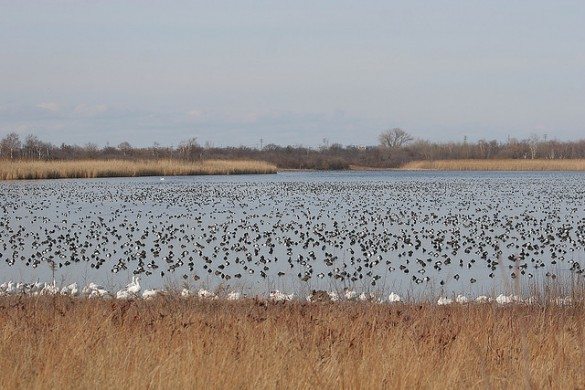CUNY To Develop Strategies To Prevent Flooding At Jamaica Bay

The Rockefeller Foundation bestowed a $250,000 grant to the City College of New York (CUNY) to figure out a way to stem the disastrous consequences of major flooding in Jamaica Bay, according to a CUNY release.
Last year, Superstorm Sandy thrashed the city and flooded much of Jamaica Bay. While Jamaica Bay’s beaches and wetlands provided some resistance to the intense flooding, surrounding urban development limited the effectiveness of the natural barriers. This has led researchers to investigate solutions to increase overall protection to the natural environment of the bay.
The team is being led by Catherine Seavitt Nordenson, an associate professor of landscape architecture at CUNY’s Spitzer School of Architecture. Nordenson was hopeful that work to protect and enhance Jamaica Bay would benefit the surrounding area and environment.
“As sea levels rise and the risk of storm surge and flooding from hurricanes and other storms increases, the vast scale of Jamaica Bay allows this region of the city to be recast and restructured as an impactful ecological, infrastructural and community asset that can enhance the region’s resiliency,” Nordenson said.
The CUNY release described the phases that the research would undergo as well as other cooperating partners in the project:
Princeton University is coordinating the multi-university effort with a planning and engineering team. The City College grant, for $250,000 over 14 months, will be developed in three phases, each concluding with an interim review with peers from City College, other CUNY institutions, and invited guests.
In addition, Princeton will organize public workshops that will include representatives from the other institutions receiving grants – University of Pennsylvania, Harvard University and Princeton – and a panel of expert advisors.
At the end of each phase, the City College team will produce a report with a narrative and documentation of that phase’s research, studies, analyses, maps and resilient design proposals. The final phase will conclude with the preparation of a final summary report and public exhibition.
It’s really amazing to see the commitment to long-term planning and vigorous scientific research needed following Sandy. Hopefully, when future storms hit, people will be safer, more property can be protected and the environment can be preserved.




